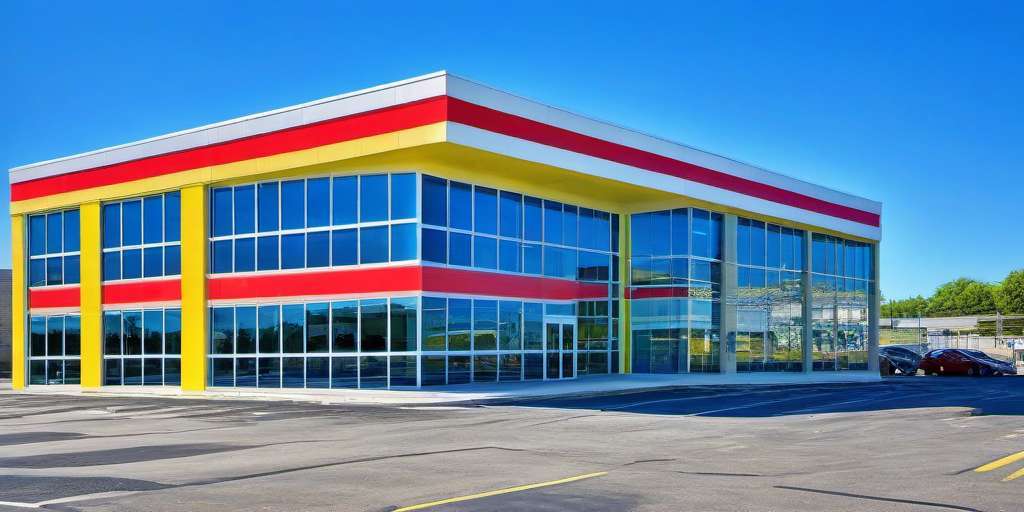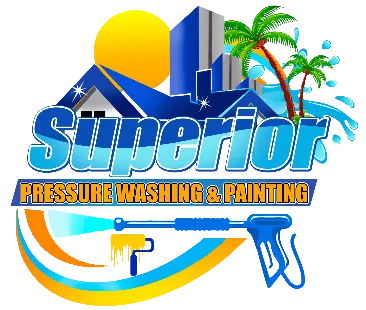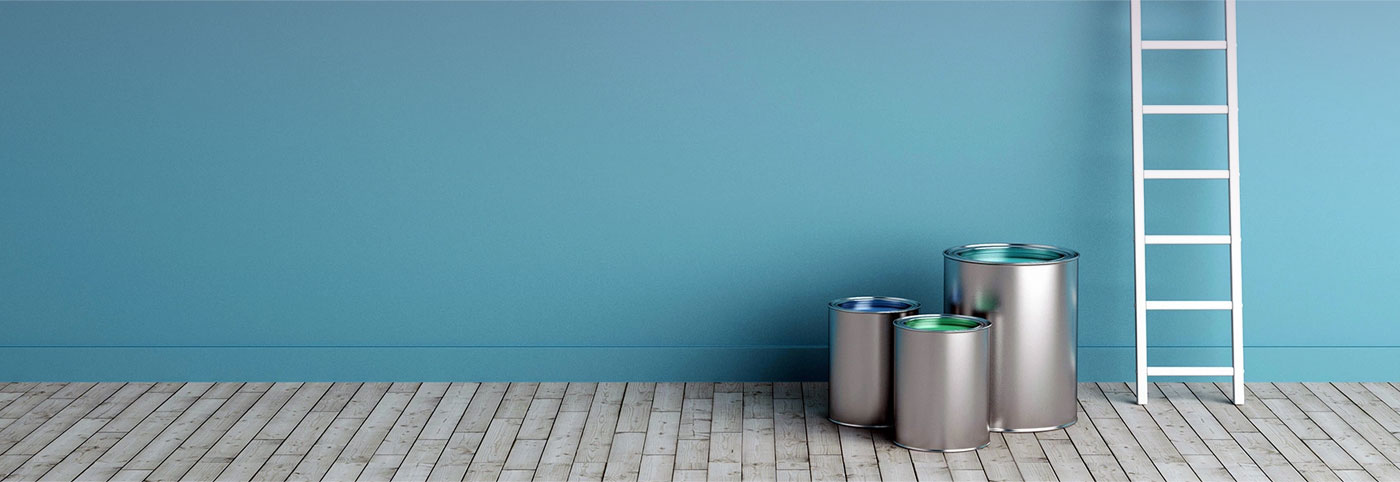Commercial Painting
Commercial Painting Services: Transform Your Business Space Today
Commercial painting services play a crucial role in maintaining the appearance and functionality of various business spaces. These services encompass both interior and exterior painting, addressing the unique needs of commercial properties. Professional painters use specialized techniques and high-quality materials to ensure a durable and aesthetically pleasing finish. Understanding the types and benefits of these services is essential for any business looking to enhance its image and protect its investment.

Understanding Commercial Painting Services
Commercial painting encompasses a range of services tailored to meet the unique needs of various businesses. This section delves into the essentials of commercial painting, highlighting its distinct characteristics and advantages.
What is Commercial Painting?
Commercial painting is specialized work focused on the enhancement and protection of commercial properties. This type of painting is distinct from residential painting due to its scale, complexity, and the specific requirements of commercial environments. The services generally include both interior and exterior applications, each requiring tailored techniques and materials designed to withstand significant wear and tear.
Key Differences Between Residential and Commercial Painting
Understanding the differences between residential and commercial painting is crucial for business owners. The contrasts primarily include:
- Scope and Scale: Commercial projects often cover larger areas and require a more extensive workforce to complete the job within a set timeline.
- Durability Requirements: Commercial spaces need coatings that can endure higher traffic and exposure to elements, unlike residential properties where aesthetic appeal may be prioritized over durability.
- Regulatory Compliance: Many commercial facilities must adhere to specific regulations and standards, particularly in regulated industries such as healthcare and food service, impacting paint selections and application processes.
- Operational Considerations: Timing and workflow differ greatly, as projects must often be executed without disrupting business operations. Night or weekend work is more common in commercial settings.
Benefits of Professional Commercial Painting
The advantages of hiring professional commercial painters are numerous, leading to better outcomes and long-term benefits for business facilities:
- Expertise and Experience: Professionals bring a wealth of knowledge, understanding the nuances of different materials and techniques suitable for various types of commercial spaces.
- Enhanced Aesthetics: A professionally painted facility can significantly improve the overall appearance of a business, leading to a more inviting environment for customers and employees alike.
- Quality and Durability: Professionals use high-quality materials and proper application techniques, ensuring a finish that can withstand the test of time and elements.
- Time Management: Professionals are equipped to efficiently manage projects, completing them on time without compromising quality.
- Safety Protocols: Commercial painters follow safety guidelines, minimizing risks associated with using paints and other materials in commercial settings.
Types of Commercial Painting Services
Understanding the various types of commercial painting services is essential for businesses looking to enhance their spaces. Each service is tailored to meet specific needs based on the environment and functionality of the premises.
Interior Commercial Painting Services
Interior painting plays a crucial role in establishing a professional and welcoming atmosphere. Different environments require specialized approaches to meet aesthetic and functional demands.
Office Spaces
Painting office spaces involves creating an environment that promotes productivity and reflects the company culture. Neutral colors are often preferred for a professional look, while vibrant accents can enhance creativity and energy.
Retail Stores
For retail stores, the right paint colors and finishes can significantly impact customer perceptions. Effective color schemes can attract customers, encourage spending, and showcase products appealingly.
Industrial Facilities
Painting industrial facilities requires durable finishes that endure heavy wear and environmental challenges. Specialized coatings can protect surfaces against chemicals, grime, and mechanical stress, ensuring longevity.
Multi-Family Complexes
In multi-family complexes, interior painting should cater to a diverse group of tenants while maintaining a cohesive look. Quality finishes throughout common areas enhance the living experience and add value to the property.
Exterior Commercial Painting Services
Exterior painting is essential for protecting buildings from weather elements while enhancing curb appeal. Various services cater to different parts of a structure.
Building Facades
The facade of a building is the first impression for clients and visitors. High-quality exterior paint not only beautifies the structure but also serves as a protective barrier against moisture and UV damage.
Parking Lots and Structures
Painting parking lots and structures involves creating clear markings for safety and traffic flow. This service also includes applying durable coatings that withstand heavy vehicle traffic and weather exposure.
Roof Painting
Roof painting can protect roofs from the elements and improve energy efficiency by reflecting sunlight. Specialized coatings can prolong the lifespan of roofing materials and reduce cooling costs.
Signage and Branding
Exterior paint can play a vital role in branding efforts. High-quality, vibrant paint can enhance signage, making it more visible and attractive to potential customers, while effectively communicating the brand’s identity.
Specialty Painting Services
Specialty painting services provide unique solutions tailored for specific needs or aesthetics. These services utilize advanced materials and techniques to achieve desired results.
Epoxy Floor Coatings
Epoxy floor coatings are essential for high-traffic areas, offering durability and resistance to spills. These coatings are ideal for industries such as manufacturing or warehousing, where floor protection is critical.
Custom Murals
Custom murals can create impactful visual statements in commercial spaces. These artistic enhancements can tell a story or embody brand values, making them a unique attraction for clients and customers.
Anti-Graffiti Coatings
Anti-graffiti coatings provide a protective layer that allows for easy removal of graffiti without damaging the underlying paint. This service is particularly useful in urban areas prone to vandalism.
Rainshield and Waterproofing
Rainshield and waterproofing services are designed to prevent water infiltration, protecting the integrity of buildings. These solutions are essential for maintaining the longevity of structures exposed to severe weather conditions.
Choosing the Right Commercial Painters
Selecting the right commercial painters is crucial for achieving a high-quality finish and ensuring the longevity of any painting project. It involves careful evaluation and consideration of various factors to ensure that the chosen contractor meets the specific needs of the business.
Commercial Painting Contractors Near Me
Finding experienced and reliable commercial painting contractors in the local area is essential. Local contractors often have a better understanding of regional regulations, climate considerations, and suppliers for materials. A quick online search or a visit to local business directories can yield potential candidates. Recommendations from other businesses can also help narrow down the choices.
What to Look for in a Commercial Painting Contractor
When evaluating potential contractors, several criteria should guide the decision-making process to ensure a satisfactory partnership.
Licenses and Insurance
Ensuring that the contractor holds the proper licenses is critical, as it verifies their legitimacy and adherence to local laws. Insurance is equally important. It protects both the contractor and the client from liabilities in case of accidents or property damage during the project. A fully insured contractor provides peace of mind.
References and Reviews
Requesting references is a vital step in the selection process. Previous clients can offer insights into the contractor’s reliability and quality of work. Additionally, checking online reviews can reveal common trends regarding the contractor’s performance, timeliness, and professionalism.
Portfolio of Past Work
Examining a contractor’s portfolio showcases their experience and skill set. A well-rounded portfolio will include various types of projects, demonstrating versatility in commercial painting. It also provides an opportunity to assess the quality of craftsmanship and aesthetic outcomes.
Detailed Estimates and Proposals
Requesting detailed estimates allows for better comparisons between contractors. A thorough proposal should outline the scope of the work, materials to be used, labor costs, and estimated timelines. This transparency helps in understanding the financial and time commitments involved in the painting project.
Questions to Ask Your Commercial Painting Contractor
Asking the right questions during initial consultations can clarify expectations and ensure that all parties are aligned on project details.
Project Timeline
Inquiring about the expected timeline for project completion helps in planning and minimizes disruption to business operations. Understanding how the contractor manages time ensures that deadlines are realistic and respected.
Materials and Techniques Used
Discussing the types of paints and materials the contractor plans to use is vital for longevity and appearance. High-quality paints might be more expensive but can offer better durability and finish. Information on application techniques should also be discussed to ensure the desired outcome is achievable.
Safety Protocols
The safety of the workers and the property should always be a priority. Asking about the safety protocols in place can give confidence that the contractor prioritizes safe practices while on the job site, adhering to relevant health and safety regulations.
Warranty and Guarantees
Confirming the warranty and guarantees provided can protect against future issues. A reputable contractor will typically offer warranties for both the workmanship and the materials used, ensuring that clients feel secure in their investment.
The Process of Commercial Painting
The process of commercial painting involves several carefully organized steps to ensure a high-quality finish. Each phase is crucial for achieving durability and aesthetics in commercial spaces.
Initial Consultation and Site Assessment
The journey begins with an initial consultation, where the contractor meets with the client to discuss project details. This includes assessing the site and identifying specific requirements, such as color preferences and areas needing attention.
Preparing the Area
Preparation is a critical step in the commercial painting process. It ensures that the work area is ready for painting, minimizing potential issues later.
Surface Cleaning
Cleaning surfaces thoroughly is essential to remove dirt, grease, and old paint. This step ensures proper adhesion of the new paint and enhances the overall finish.
Sanding and Priming
Sanding may be necessary to create a smooth surface, particularly on rough or uneven areas. Priming helps improve paint adhesion and enhances color vibrancy, making it a vital part of the preparation.
Protective Measures
Before painting begins, it is important to implement protective measures. This involves covering furniture, floors, and other surfaces that should not be painted. Proper masking and protection help prevent damage during the painting process.
Painting Application Techniques
Once the area is prepared, the actual painting can commence. Different techniques are employed based on the project requirements.
Brush and Roller Methods
Brush and roller methods are commonly used for both interior and exterior applications. Brushes are ideal for detailed work and edges, while rollers cover large areas efficiently.
Spray Painting Techniques
In larger projects, spray painting techniques may be employed for quick, even coverage. This method is especially beneficial for achieving a smooth finish on expansive surfaces.
Specialized Equipment for Large Projects
For extensive commercial jobs, specialized equipment may be necessary. This includes sprayers, scaffolding, and lifts to access hard-to-reach areas and ensure effective painting.
Quality Control and Final Inspection
After application, a quality control process is implemented. This includes a thorough inspection to identify any imperfections or areas needing touch-ups. Attention to detail at this stage is essential for achieving the best possible results.
Clean-Up and Project Completion
Once painting is completed, the clean-up process begins. This involves removing protective coverings, cleaning tools, and ensuring the area is left spotless. A successful project ends with a final walk-through to ensure client satisfaction and ensure that all tasks have been completed to standards.
Maintaining Your Commercial Paint Job
Proper maintenance is crucial for extending the life and appearance of a commercial paint job. Regular upkeep can prevent costly repairs and ensure that the property continues to project a professional image.
Regular Inspections and Touch-Ups
Routine inspections of painted surfaces can help identify issues before they escalate. Scheduled evaluations can be conducted quarterly or bi-annually, depending on the environment and exposure to elements. Key components to check during inspections include:
- Peeling or chipping paint
- Signs of mold or mildew
- Fading colors due to sunlight exposure
- Cracks or damage from weather conditions
Touch-ups should be performed as soon as issues are identified. This ensures that the paint finish remains uniform and the protective qualities of the paint are not compromised.
Environmental Factors and Maintenance
Various environmental conditions can impact the durability of commercial paint. Factors such as humidity, temperature fluctuations, and exposure to sunlight can lead to wear and tear. Consider the following:
- In humid climates, ensure adequate ventilation to minimize moisture buildup.
- In areas with high UV exposure, opting for fade-resistant paints can help maintain color longevity.
- Temperature extremes can affect paint adhesion; maintaining a stable internal climate can support paint integrity.
Additional protective measures, such as applying sealants or waterproof coatings, can further enhance paint durability, especially for exterior surfaces.
When to Repaint: Signs to Look For
Recognizing when it’s time for a repaint is essential for maintaining the appearance and value of a commercial property. Consider these signs:
- Visible wear and tear, such as cracks or large areas of peeling
- Frequent touch-ups that indicate deeper issues with the underlying surface
- Changes in color that detract from the professional appearance of the business
- Accumulation of dirt and grime that cannot be removed through cleaning
An assessment of these factors can guide property managers in deciding when a full repaint is necessary, ensuring that the business maintains its visual appeal and protective qualities over time.
Frequently Asked Questions
This section addresses some of the most common inquiries regarding commercial painting services. Understanding these aspects can help in making informed decisions and ensuring a successful project outcome.
How to Get a Reliable Estimate
Obtaining a reliable estimate involves several steps to ensure accuracy and transparency. First, it’s important to schedule a consultation with potential contractors. During this meeting, specific project details are discussed, including:
- Scope of work
- Areas to be painted
- Desired materials and finishes
- Timeline for completion
After assessing these factors, contractors will provide a written estimate that should detail all costs involved. A breakdown of materials, labor, and any additional fees helps clients better understand the financial commitment. It’s advisable to compare estimates from multiple contractors to find a competitive deal.
How Long Does a Commercial Painting Project Take?
The duration of a commercial painting project can vary widely based on several factors, including:
- The size and complexity of the project
- Type of surfaces being painted
- Preparation work required
- Weather conditions for exterior projects
Generally, smaller interior projects may take a few days to complete, while larger commercial buildings can require several weeks. Communicating with the contractor during the planning phase can provide a clearer timeline tailored to the specific project.
What Types of Paint are Best for Commercial Buildings?
Selecting the appropriate type of paint is vital for longevity and performance. Key considerations include:
- Durability: Commercial environments demand paints that resist wear and tear.
- Washability: Easy-clean options are preferable, especially in high-traffic areas.
- Finish: The choice of finish (matte, satin, gloss) affects appearance and maintenance.
Water-based paints are often favored due to their low VOC levels and quick drying times. Oil-based paints may be used for specific applications but require longer to cure.
How to Minimize Disruption to Business Operations
To reduce interruptions during a painting project, several strategies can be implemented:
- Schedule work during off-peak hours or weekends.
- Prepare workspaces in advance to ensure quick access.
- Communicate clearly with staff about the project timeline and expectations.
Hiring experienced contractors who understand how to efficiently manage commercial projects can also help minimize disruption, ensuring that operations continue smoothly throughout the process.


 Previous Post
Previous Post Next Post
Next Post